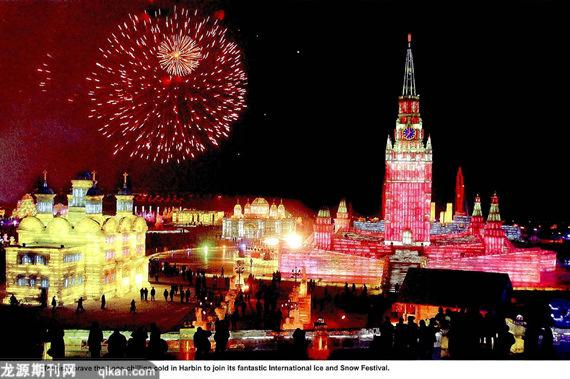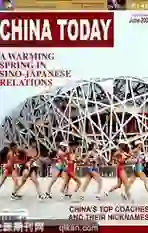A Breakthrough for Old Industrial Bases
2008-06-25XUYING
XU YING
IN a globalized economy, national development tends to follow a predictable pattern: a given nations regions begin to emerge economically, providing impetus for the growth of metropolitan centers, which promote industrial agglomerations that feed the demands of the world market. This pattern has been repeatedly demonstrated in the industrialized Western countries over the course of the 20th century. Now China, too, is drawing on that experience to achieve its intended goal of national prosperity by 2020.

In the 1990s, industrial metropolitan centers took shape in the comparatively developed Yangtze River Delta, the Pearl River Delta and the Beijing economic rim. All three were regarded as the pacesetters for Chinas national economic development. The 21st century is now witnessing the emergence of similar urban concentrations in every other part of the country – in Chengdu-Chongqing in the southwest, and Changsha-Zhuzhou-Xiangtan in the south, for instance.
In Heilongjiang, a province on Chinas northeastern edge along a 3,000-kilometer border with Russia, the cities of Harbin, Daqing and Qiqihar are also poised to emerge as major hubs in a new industrial corridor.
In 2006, Governor Li Zhanshu was still a deputy provincial governor, and at the time he discussed the importance of the nascent Harbin-Daqing-Qiqihar corridor with enthusiasm. Now as governor, he made clear that his optimism had not been misplaced. For several years running, the province has been a growing economic power, with a steadily diversifying industrial base and a seemingly limitless pool of talent on which to draw. Governor Li, to say the least, is sanguine about the future of his region.
But Heilongjiangs ascent must be nurtured carefully, Li cautioned. Greater economic efficiency and coordination are still critical tasks if the region is to continue prospering. “Heilongjiang is an extremely rich province in terms of natural resources,” he said. “But there are at least three problems. The first is how to revitalize the old large-scale state-owned enterprises, the second is to expand border trade, and the third is to transform the economies of our resource-based cities.”
It was once a widely accepted notion that regional development depended on drawing from the inventory assets of old state-owned enterprises. But Li has steadfastly insisted that the only way forward lies in structural reform and a new focal point for growth in the regional economy.
Based on varying criteria of resource availability, environment and local features, the province can be divided into four regions. In addition to the Harbin-Daqing-Qiqihar corridor, whose manufacturing industry is dominant, there are the cities of Jixi, Hegang, Shuangyashan and Qitaihe, which lead in coal-electricity and coal-chemicals production, the border trading belt of Mudanjiang, Jiamusi and Heihe, and a green belt in the Greater Hinggan and the Lesser Hinggan mountains.
The Harbin-Daqing-Qiqihar economic region now contributes about 70 percent of Heilongjiangs industrial output, and Harbin, the provincial capital, is unsurprisingly the most prosperous. The remaining two cities also have their advantages – Daqing, which has been dubbed “oil city,” is rich in petroleum, while Qiqihar has a sound industrial base. With a convenient transportation system and an advanced level of science and technology, the triad region has attracted about RMB 38 billion since 2005, when the provincial government announced its resolution to build the industrial corridor. And at least 520 enterprises have established themselves in the 76-square-kilometer industrial zone, 260 of which have already begun operating.
But the project still faces significant hurdles. The original plan called for the entire region to become a capital-intensive economy, with the attendant industrial structure and characteristics, such as environmental friendliness, high-technology and export-oriented production. Following a rapid expansion in the first few years, the targeted development has run into some obstacles, such as land ownership disputes, shortages of funds, a sometimes inappropriate industrial layout, and inadequate policy support.
But Li Zhanshu is not too worried. He regards such problems as merely a legacy of the old planned economy, and has proposed four principles of development for his region to follow – namely, a new system and high technology, coupled with export-oriented and environmentally friendly industries.

“The essence is innovation,” Li said, “especially with regard to economic structure.” The government, he said, plans to knock down the barriers dividing the cities, as well as those dividing the cities from the countryside, in order to build a more open market where production and talent circulate freely. In addition to Harbin, Daqing and Qi-qihar, other cities are also expected to concentrate on their own advantages, improving the competitiveness of the entire province.
